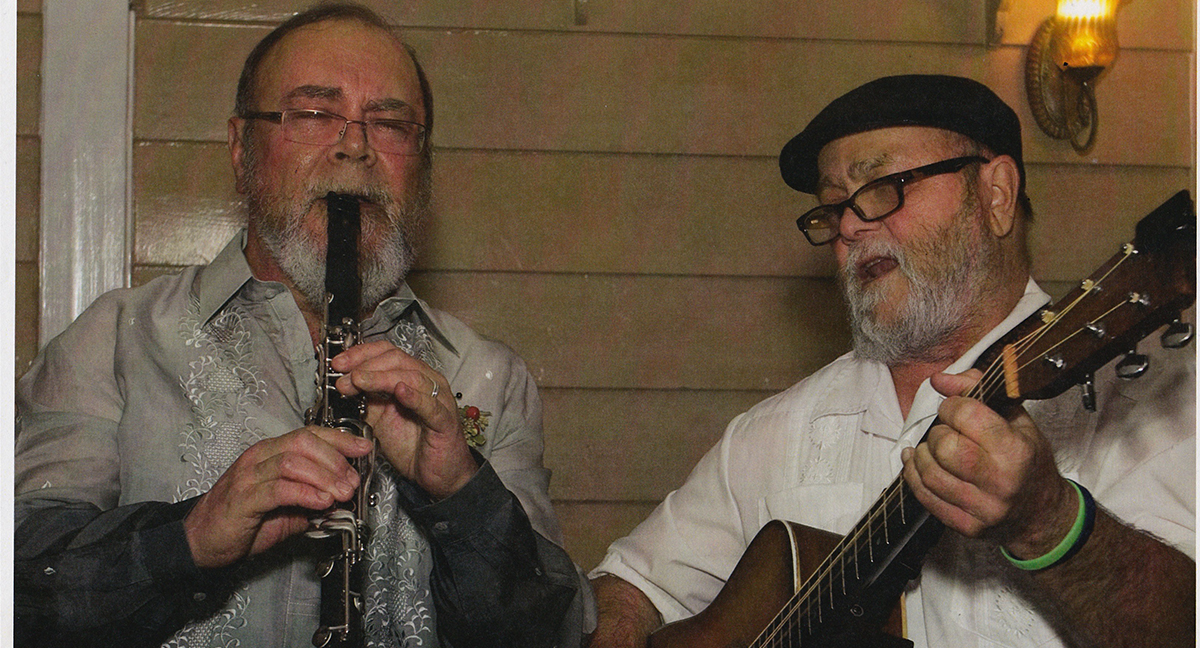Musicians sometimes take unusual measures in order to create the specific sounds they have in their minds. Other times, they experiment to just see what happens with sound. For example, Icelandic musician Björk had engineers build gravity harps for her Biophilia tour. Pat Metheny created a 42-string guitar. Members of the 1970s band 10cc created the Gizmotron, a blend of a guitar and bass that makes violin-like sounds.
Louisville musician Bruce Krohmer is also guilty of creating his own instrument (a half-clarinet that he plays with a full clarinet), but he is also known for playing just one clarinet in an unusual place: a standpipe.
What is a standpipe, you ask? Its most basic definition is a vertical pipe that helps ensure stable pressure in a water-supply system. If you research images, you will see all kinds of vertical pipes, but these are all quite small. The standpipe that Krohmer has recorded in is huge, standing at around 165 feet, and it is surrounded and protected by an even taller iconic tower that was designated as a National Historic Landmark in the early 1970s. This tower is one you can see every time you drive on or past River Road at the intersection of Zorn Avenue.
According to a 2016 article by Joe Holleman from the St. Louis Post-Dispatch, these standpipe towers used to be found in many places, numbering into the hundreds, and were scattered across the United States in the late 19th and early 20th centuries. Now only seven remain, and one of them is the Louisville Water Tower. It is, in fact, the oldest one, built in 1860.
While the tower’s architecture itself is beautiful, what it encloses – the standpipe – is very utilitarian. In a write-up about the restoration of the tower on its website, the Louisville Water Company noted that the standpipe “helped control the force of giant steam engines that pulled water from the Ohio River for Louisville Water’s operations.”
Krohmer first had the idea to record in the standpipe in the late 1980s and early 1990s when he attended a music festival on the tower grounds and was able to get access to play in the standpipe. “I stood 38 feet off the ground and played clarinet for two hours,” he says. “I was playing mostly Bach because it worked really well with the reverb in there. It sounded like I was playing three clarinets at once. Even though it is a tall place, it is not very wide, so sound bounces back really quickly.”

He moved out of Louisville for several years, but when he returned he asked the Louisville Water Company if he could play in the standpipe again, and didn’t have any success. After about six years of pleading his case to play in the tower again, he got his wish after the space was completely renovated. “It took me about 14 years to get back in there to make this recording,” he says. “I guess they just got tired of telling me no.”
While he originally played Bach in the standpipe, he mixed up the music for his most recent session, which included recording. “Now I have more of my avant-garde music along with songs from the 1830s,” he says. Two of the songs Krohmer played were composed by William Cumming Peters, a man who opened the first music store in Louisville in 1832. Recording in the standpipe only took about four hours, and was expertly recorded by sound technician Howie Gano.
While playing music in a standpipe may sound odd, it is only one of the memorable experiences Krohmer has had since being bitten by the music bug and learning to play in elementary school.
He began his music career with the clarinet, and his reason for selecting it is fairly endearing. His older brother played oboe with the University of Louisville orchestra. “I saw him practicing his oboe around the house so I picked out the clarinet because it was the only thing that looked like his oboe,” Krohmer says.
When he decided to learn to play the saxophone, though, his reasons were a little more practical. “My teacher, Mr. Markert, said, ‘If you want to make money and you’re going to play a reed instrument, learn to play the saxophone because there are lots of gigs with saxophones,’” he says.
After Krohmer’s father died and his mother returned to full-time work, he would hang out after school at the St. Matthews Eline library until his mother got off. It was there that he spent hours listening to jazz music. “I listened to every record they had,” he says. He recalls buying a John Coltrane album at age 11 from Webb’s Drugs on Hubbards Lane.
At age 13 he had gotten a Woody Herman album after joining the jazz club, and was able to see the band perform at Black Expo in downtown Louisville. “At break time, I went up and talked to him,” Krohmer says. “I walked with him, his pianist and his lead trombonist, and talked to them for about 20 minutes during their break, absorbing all this stuff.” It was at this age that he joined the Louisville Civic Orchestra.
Around two years later, Krohmer was able to hear one of his favorite musicians, Roland Kirk, a blind musician who plays three saxophones at once. “He has two special saxes that he picked out of pawn shops and modified a little bit,” he says. Bruce went to 114 West, a jazz club of the time. “I sat on the steps outside the club and listened to him play,” he says. He loved not only Kirk’s music, but also his sense of humor and his ingenuity with adapting instruments to make unique sounds.
Though jazz was his first love, as Krohmer got older, his musical life grew more varied. He co-founded Kentucky Homefront Performances, a radio and live show, with John Gage, and played in numerous bands. “I played with the Merseybeats U.S.A. and with two retro country bands, the Falls City Ramblers and the Buzzard Rock String Band,” he says. When he lived in Maryland, Oktoberfest was a big event, so he played in those types of polka bands for a long time. He has played with some klezmer bands, which he says is fun because you have to make the clarinet chirp. He played with a progressive rock group called French TV on their second and third albums. Plus, over the years he played stints with the Louisville Orchestra and as an Actors Theatre pit musician.
So what is next for this experimental musician? Since making the standpipe recordings, he has been busy working to put the finishing touches on songs in post-production and figuring out how he wants to distribute the recordings. And after that? Well, if his musical history is any indication, it will be something unexpected.





